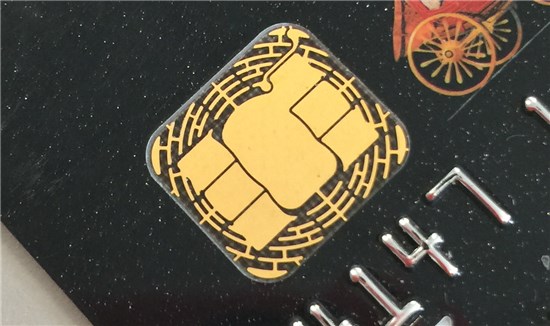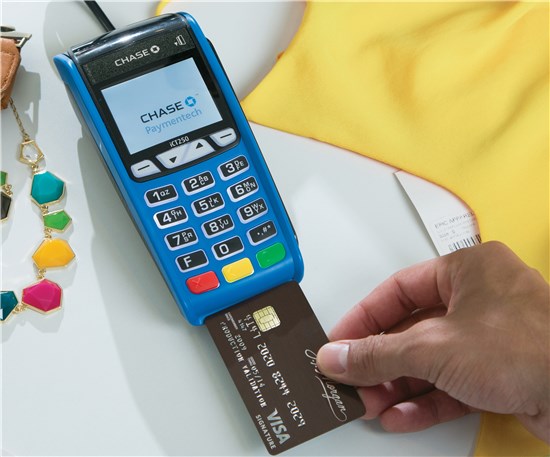Deanna Karhuniemi

Vice-President of EMV Strategy, Chase Commerce Solutions
Oct. 28, 2015
SYNOPSIS
Your practice will start seeing payment cards presented that are equipped with EMV microchip technology. Be ready to securely accept and process these cards to help prevent the acceptance of fraud. By supporting a point-of-sale (POS) solution that can accept chip cards, you will protect your practice from being liable for any counterfeit and potentially lost or stolen fraud attempted.
ACTION POINTS
PURCHASE OR ADAPT POS SYSTEM. Your payment card processing system should be updated to securely accept and process cards with EMV chips embedded.
FIND A SOLUTION. Solutions like Chase’s iCT250 POS terminal can be purchased to update your payment card processing system in support of EMV chip card acceptance.
CREATE IMPLEMENTATION PLAN. Don’t wait to migrate your POS solution, train employees and set goal dates for getting the full transition to the new EMV chip card acceptance solution done.
As of Oct 1, 2015, businesses–including healthcare practices—that do not have a point-of-sale solution, capable of processing EMV microchip technology, may be susceptible to the cost of any counterfeit and potentially lost and stolen fraud accepted at their place of business. If payment card fraud occurs in your practice as a result of not being able to accept EMV chip technology, the then liability for those transactions will shift from the payment-card-issuing bank to your practice.
Chase’s iCT250 POS terminal, which enables businesses, including optometric practices, to process transactions from patients with credit cards featuring EMV microchip technology. As of Oct. 1, 2015, practices without this kind of point-of-sale technology may be susceptible to the cost of any counterfeit and potentially lost and stolen fraud accepted at their place of business
What’s At Stake?
With the enforcement of the liability shift, if a chip card is presented to a business that has not adopted a POS terminal solution, which is certified for chip and PIN card acceptance, liability for counterfeit and potentially lost and stolen fraud may now become the merchant’s responsibility.
If a fraudulent payment card is presented at an EMV chip certified POS terminal solution, which is additionally capable of prompting for PIN, then the liability for the counterfeit and potentially lost and stolen fraud will remain the responsibility of the payment-card-issuing bank.
EMV chip technology is capable of producing secure dynamic data, making each card present transaction instance unique. This effectively makes copying payment card data to produce and facilitate counterfeit fraud nearly impossible.The added support of PIN cardholder verification method helps to additionally prevent the acceptance of lost and stolen fraud. The EMV chip standard has many names worldwide, and may also be referred to as: “chip and PIN” or “chip and signature.”
What’s the Solution?
Businesses are responsible for purchasing a POS terminal solution, such as Chase’s iCT250 POS terminal, or updating the current integrated POS system, so it is capable of accepting and processing EMV chip cards. The cost to a practice to upgrade their POS solution could vary, depending on the type of hardware procured, if it needs to be integrated with any existing systems and the features that it supports.
When businesses are looking to upgrade their POS terminal solutions, they should look at other emerging technologies and purchase a solution that future proofs their payment acceptance. Do it once, do it right. Look for a solution that includes not only EMV, which helps to prevent the acceptance of counterfeit and potentially lost and stolen fraud, but one that holistically secures the payment acceptance environment. Complimentary security solutions, such as encryption and tokenization, help to further protect sensitive data that is accepted and sent with transaction requests and data that may be stored for recurring type payments.
Chase has put together an informative EMV FAQ page that details how the acceptance of EMV chip card technology may benefit and protect your practice.
EMV Technology: Take Action
Here are three key recommendations from Chase for readying your practice for this technology:
Train both employees, as well as patients. With EMV chip card acceptance, cardholders are much more involved in the transaction than with the traditional magstripe. Chip cards must be inserted (“dipped”) into the POS terminal, instead of being swiped, and they must remain inserted for until a transaction response is obtained. Ensuring everyone is familiar with the new transaction acceptance requirements will make the customer experience as smooth as possible.
Don’t wait to migrate. You may begin to feel the pressure once the EMV card migration starts to reach its critical mass – with issuing banks beginning to issue chip cards to new and existing customers. Businesses that have not already migrated to EMV may consequently have to answer to their customers as to why they have to continue to swipe their new chip cards – especially when the market presents chip technology as the safer way to pay. Don’t wait until the last minute to migrate your business. Additionally, as other businesses begin securing their payment acceptance environments, fraud will migrate to the weakest links. If your practice is the last to accept EMV chip card technology, you will be more susceptible to potential counterfeit and lost or stolen fraud attacks.
Create implementation plan. When planning on how to update your systems to support this change, you will want to take a hard look at the cost vs. benefits of EMV. In some cases, fraud prevention alone may not deliver an acceptable ROI for the effort required to implement this technology. With that, you will want to make sure that your new or updated POS terminal solution can also deliver other benefits such as support for complimentary security solutions like encryption and tokenization, or enabling acceptance of contact-less/mobile payment transactions.
Deanna Karhuniemi is vice-president of EMV Strategy, Chase Commerce Solutions. For more information, please contact Chase’s Edward “Murray” Regan, Vice-President, Director, Partnership Development for Chase Paymentech at 214-849-3285 or edward.regan@chasepaymentech.com


























